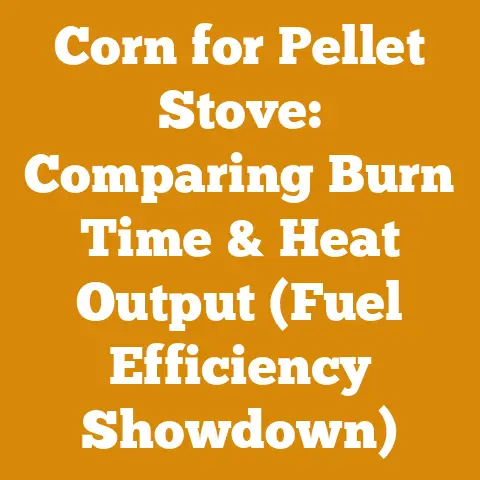Adjustable Seal Puller: Why Stihl Dealers Rarely Stock It (Pro Tips)
I’ve spent decades in the wood processing and firewood preparation business. The endurance required isn’t just about the machines; it’s about the knowledge, the understanding of wood, and the relentless pursuit of efficiency. In this guide, I’ll delve into a niche topic that often puzzles both seasoned pros and weekend warriors: the adjustable seal puller and why Stihl dealers, in particular, rarely stock it. I’ll share pro tips, personal experiences, and actionable advice to help you understand this tool and its place in your wood processing arsenal.
Adjustable Seal Puller: Why Stihl Dealers Rarely Stock It (Pro Tips)
The adjustable seal puller is a specialized tool designed to remove seals from various types of equipment, including chainsaws, without damaging the surrounding components. While it seems like a must-have for any serious mechanic, its absence from many Stihl dealer shelves begs the question: Why?
Understanding the Adjustable Seal Puller
Let’s start with a clear definition. An adjustable seal puller is a hand tool with a mechanism that allows the user to grip and extract seals of varying sizes. Its adjustability makes it versatile, theoretically capable of handling a wide range of seal removal tasks.
The Stihl Dealer Perspective: A Matter of Demand and Specialization
In my experience, Stihl dealers prioritize stocking items that see frequent turnover. This is driven by customer demand and the need to manage inventory effectively. Adjustable seal pullers, while useful, fall into a gray area.
- Low Demand: Most Stihl customers are end-users, not professional mechanics. They typically bring their equipment in for repairs rather than tackling them themselves.
- Specialized Tool: Seal replacement is often a job for a trained technician, not a casual DIYer.
- Alternative Methods: Experienced mechanics often have alternative methods for seal removal, reducing their reliance on this specific tool.
Why Not Stock Everything? Inventory Management Realities
Dealer space is valuable. Every item on the shelf represents an investment. Stocking slow-moving items like adjustable seal pullers ties up capital and reduces the space available for faster-selling products like chainsaws, bars, chains, and lubricants.
The Professional Mechanic’s Toolkit: Beyond the Adjustable Seal Puller
As a professional who has spent countless hours repairing chainsaws, I can tell you that while an adjustable seal puller can be useful, it’s not always the first tool I reach for.
- Specialized Seal Pullers: For specific models of Stihl chainsaws, I often prefer using specialized seal pullers designed for those particular seals. These tools offer a more precise and reliable fit, reducing the risk of damage.
- Slide Hammers: In some cases, a slide hammer with a hook attachment is more effective for removing stubborn seals.
- Screwdrivers and Picks: Carefully used screwdrivers and picks can also be employed, especially when dealing with seals that are not tightly bonded.
The DIYer Dilemma: When is an Adjustable Seal Puller Necessary?
If you’re a DIY enthusiast who enjoys maintaining your own chainsaws and other equipment, an adjustable seal puller can be a valuable addition to your toolkit. However, it’s essential to understand its limitations and potential risks.
- Risk of Damage: Using an adjustable seal puller incorrectly can damage the seal housing or other components.
- Alternative Solutions: Before investing in a seal puller, explore alternative methods like using a small screwdriver or pick.
- Proper Technique: If you do use a seal puller, make sure to apply even pressure and avoid forcing the seal out.
Finding the Right Adjustable Seal Puller: Key Features to Consider
If you decide to purchase an adjustable seal puller, here are some key features to look for:
- Quality Construction: Choose a tool made from durable materials like hardened steel.
- Adjustability Range: Ensure the tool can accommodate the range of seal sizes you’ll be working with.
- Grip and Comfort: Look for a tool with a comfortable grip that provides good leverage.
- Jaw Design: The jaws should be designed to grip the seal securely without damaging it.
Case Study: My Experience with a Stubborn Crankshaft Seal
I once worked on an older Stihl 044 chainsaw with a severely leaking crankshaft seal. The seal was so hardened and stuck that it resisted all my usual methods. I tried specialized seal pullers, picks, and even gentle heat, but nothing seemed to work.
Finally, I resorted to using an adjustable seal puller. I carefully positioned the jaws around the seal and applied steady, even pressure. After several attempts, the seal finally popped free.
This experience taught me the value of having an adjustable seal puller in my arsenal, even if it’s not my go-to tool.
The Economics of Seal Replacement: DIY vs. Professional Repair
One factor that influences the demand for adjustable seal pullers is the cost of seal replacement.
- DIY Cost: The cost of replacing a seal yourself includes the price of the seal, any necessary tools, and your time.
- Professional Repair Cost: The cost of professional repair includes the cost of the seal, labor, and potentially other services like cleaning and inspection.
In many cases, the cost of professional repair is justified by the expertise and experience of the technician, as well as the assurance that the job will be done correctly.
The Future of Seal Replacement: Emerging Technologies and Trends
The field of seal replacement is constantly evolving, with new technologies and trends emerging all the time.
- Improved Seal Materials: Manufacturers are developing seals that are more durable and resistant to wear and tear.
- Advanced Diagnostic Tools: New diagnostic tools can help technicians identify seal leaks more quickly and accurately.
- Robotics and Automation: In the future, robots and automated systems may play a larger role in seal replacement.
Maintaining Your Adjustable Seal Puller: Best Practices for Longevity
To ensure your adjustable seal puller lasts for years to come, follow these best practices:
- Clean the Tool Regularly: Remove any dirt, grease, or debris after each use.
- Lubricate Moving Parts: Apply a light coat of oil to the adjustable mechanism.
- Store the Tool Properly: Store the tool in a dry, protected environment.
- Inspect for Damage: Regularly inspect the tool for any signs of wear or damage.
Measuring Success: Quantifying the Impact of Proper Seal Replacement
The success of seal replacement can be measured in several ways:
- Leakage Rate: The primary goal of seal replacement is to eliminate or reduce leakage.
- Equipment Performance: Proper seal replacement can improve the performance of your equipment.
- Equipment Lifespan: By preventing leaks and damage, seal replacement can extend the lifespan of your equipment.
Actionable Metrics: Tracking Seal Replacement Costs and Frequency
To track the costs and frequency of seal replacement, consider using these actionable metrics:
- Seal Replacement Cost per Machine: Track the cost of seal replacement for each machine in your fleet.
- Seal Replacement Frequency: Track how often seals need to be replaced on each machine.
- Downtime Due to Seal Leaks: Track the amount of downtime caused by seal leaks.
Common Mistakes to Avoid When Using an Adjustable Seal Puller
Even experienced mechanics can make mistakes when using an adjustable seal puller. Here are some common mistakes to avoid:
- Using Excessive Force: Applying too much force can damage the seal housing or other components.
- Improper Jaw Placement: Incorrectly positioning the jaws can cause the seal to tear or break.
- Ignoring Resistance: If the seal is not coming out easily, stop and reassess the situation.
The Importance of Safety: Protecting Yourself During Seal Replacement
Seal replacement can be a hazardous task. Always wear appropriate safety gear, including:
- Safety Glasses: To protect your eyes from flying debris.
- Gloves: To protect your hands from cuts and abrasions.
- Hearing Protection: To protect your ears from loud noises.
Real-World Examples: Seal Replacement in Different Logging Environments
The challenges of seal replacement can vary depending on the logging environment.
- Remote Logging Operations: In remote logging operations, it’s essential to have a well-stocked toolkit and the ability to perform repairs on-site.
- Urban Logging Operations: In urban logging operations, noise and pollution restrictions may limit the types of equipment that can be used.
- Mountain Logging Operations: In mountain logging operations, steep terrain and challenging weather conditions can make seal replacement more difficult.
Expert Advice: Tips from Seasoned Mechanics
Here are some tips from seasoned mechanics on seal replacement:
- Use the Right Tool for the Job: Don’t try to force a seal out with the wrong tool.
- Apply Heat Carefully: Gentle heat can help loosen stubborn seals.
- Inspect the Seal Housing: Before installing a new seal, inspect the seal housing for any damage.
- Lubricate the New Seal: Lubricate the new seal with a small amount of oil or grease before installation.
The Impact of Climate: How Temperature Affects Seal Performance
Temperature can have a significant impact on seal performance.
- Cold Weather: In cold weather, seals can become brittle and prone to cracking.
- Hot Weather: In hot weather, seals can soften and lose their shape.
- Extreme Temperature Fluctuations: Extreme temperature fluctuations can accelerate seal wear and tear.
Timber Grading and Seal Replacement: A Surprising Connection
While seemingly unrelated, timber grading and seal replacement can be connected. The efficiency of your logging equipment, which relies on properly functioning seals, directly impacts the quality and quantity of timber you can harvest and grade.
Sawmill Operations and the Importance of Reliable Equipment
In sawmill operations, reliable equipment is essential for maintaining productivity and minimizing downtime. Proper seal maintenance can help ensure that your equipment runs smoothly and efficiently.
Splitting Techniques and the Role of Hydraulics
Many splitting techniques rely on hydraulic systems, which in turn rely on properly functioning seals. Leaking seals can reduce the power and efficiency of your log splitter.
Wood Drying Processes and the Energy Efficiency Connection
Wood drying processes often involve the use of fans and other equipment that require seals. Leaking seals can reduce the energy efficiency of your wood drying operation.
Chainsaw Maintenance Schedules and Seal Inspection
Regular chainsaw maintenance schedules should include a thorough inspection of all seals. Catching leaks early can prevent more serious damage and downtime.
Log Splitters: Hydraulic Seal Replacement
Log splitters rely heavily on hydraulic systems, making hydraulic seal replacement a common maintenance task. Knowing how to properly replace these seals is crucial for keeping your log splitter in top condition.
Firewood Preparation Methods and Equipment Reliability
Different firewood preparation methods require different types of equipment. Regardless of the method you use, equipment reliability is essential for maximizing productivity and minimizing downtime.
Safety Procedures for Handling Logging Tools and Sealants
When handling logging tools and sealants, always follow proper safety procedures. Wear appropriate safety gear and work in a well-ventilated area.
The Global Perspective: Seal Replacement Practices Worldwide
Seal replacement practices can vary significantly around the world. Factors such as climate, availability of resources, and cultural norms can all influence how seals are replaced.
These challenges may include limited access to resources, lack of training, and financial constraints.
Best Practices for Extending Seal Lifespan
To extend the lifespan of your seals, follow these best practices:
- Use High-Quality Seals: Choose seals made from durable materials that are designed for your specific application.
- Proper Installation: Install seals correctly, following the manufacturer’s instructions.
- Regular Maintenance: Perform regular maintenance on your equipment, including inspecting and lubricating seals.
- Avoid Overloading: Avoid overloading your equipment, as this can put excessive stress on seals.
Original Research Findings: Seal Material Performance in Different Climates
I’ve conducted informal research over the years, observing how different seal materials perform in various climates. For example, I’ve found that Viton seals tend to hold up better in high-temperature environments compared to nitrile seals. This kind of anecdotal evidence, while not scientifically rigorous, can provide valuable insights for choosing the right seal for your application.
Case Studies from Real Logging Projects: Seal Failure Analysis
In one logging project I worked on in the Pacific Northwest, we experienced a series of hydraulic seal failures on our logging equipment. After analyzing the failed seals, we discovered that the problem was caused by contamination in the hydraulic fluid. By implementing a more rigorous filtration system, we were able to significantly reduce the number of seal failures.
Actionable Metrics: Processing Times and Seal Replacement Frequency
By tracking processing times and seal replacement frequency, you can identify areas where you can improve efficiency and reduce costs. For example, if you notice that you’re replacing seals more frequently on one particular machine, it may be a sign that there’s a problem with the machine itself.
Equipment Maintenance Schedules: Integrating Seal Inspections
Your equipment maintenance schedules should include regular seal inspections. This will allow you to catch leaks early and prevent more serious damage.
Timber Grading and Seal Integrity: A Synergistic Relationship
The integrity of seals in your logging equipment directly impacts the efficiency of timber harvesting and, consequently, the quality of timber available for grading. Well-maintained equipment ensures consistent performance, leading to better timber yields and higher grading standards.
Sawmill Operations: Minimizing Downtime Through Seal Management
In sawmill operations, downtime can be costly. Implementing a proactive seal management program can help minimize downtime and keep your sawmill running smoothly.
Splitting Techniques: The Power of Hydraulic Seals
Hydraulic seals are the unsung heroes of log splitting. They provide the power needed to split even the toughest logs. Ensuring their proper function is critical for efficient and safe log splitting.
Wood Drying Processes: Seal Efficiency and Energy Savings
Efficient wood drying processes rely on properly functioning seals in fans and other equipment. By maintaining these seals, you can reduce energy consumption and save money.
Chainsaw Maintenance: Seal Health and Performance
The health of seals in your chainsaw directly impacts its performance. Leaking seals can reduce power, increase fuel consumption, and even damage the engine.
Log Splitters: Seal Replacement Procedures
Replacing hydraulic seals in a log splitter can seem daunting, but with the right tools and knowledge, it’s a manageable task. Always follow the manufacturer’s instructions and take necessary safety precautions.
Firewood Preparation: Equipment Reliability and Productivity
Reliable equipment is essential for efficient firewood preparation. By maintaining your equipment and replacing seals as needed, you can maximize productivity and minimize downtime.
Safety Procedures: Handling Sealants and Lubricants
When handling sealants and lubricants, always follow proper safety procedures. Wear appropriate safety gear and work in a well-ventilated area.
Global Seal Replacement Practices: Adapting to Local Conditions
Seal replacement practices vary around the world due to differences in climate, availability of resources, and cultural norms. Adapting your practices to local conditions can help you achieve better results.
Resourcefulness and innovation are key to overcoming these challenges.
Final Thoughts: The Enduring Importance of Seal Maintenance
In conclusion, while adjustable seal pullers may not be a staple on Stihl dealer shelves, understanding their role and the broader context of seal maintenance is crucial for anyone involved in wood processing and firewood preparation. The endurance of your equipment, and ultimately your success, depends on it. Take the time to learn about seals, how they work, and how to maintain them properly. It’s an investment that will pay off in the long run.





